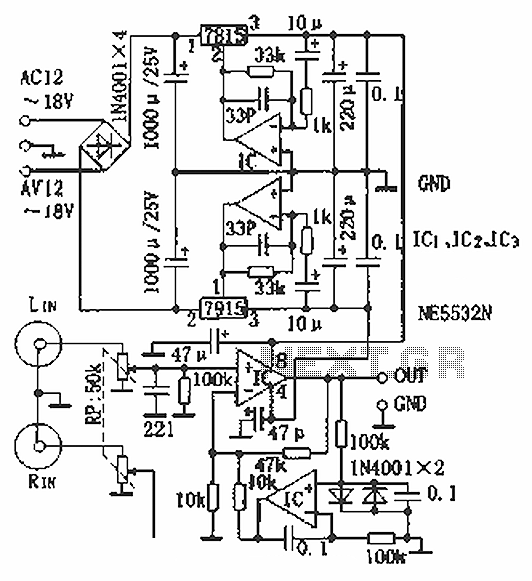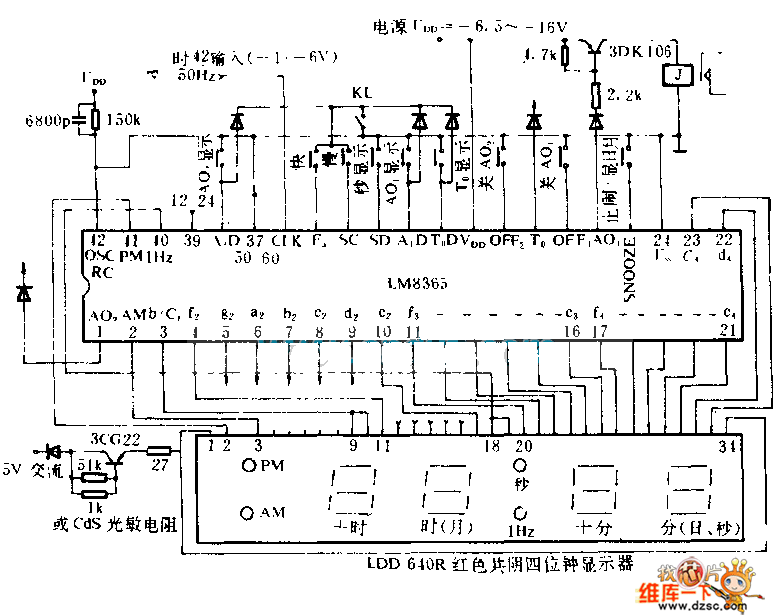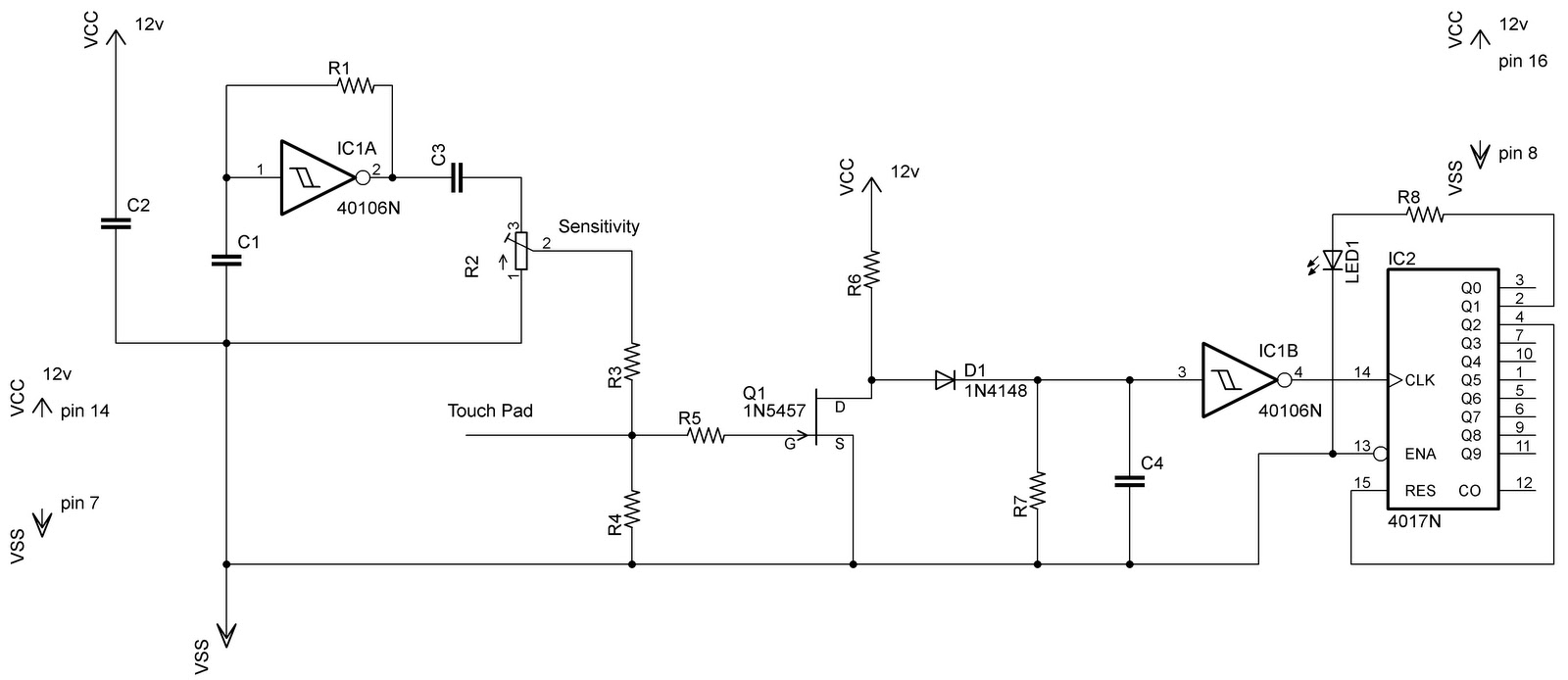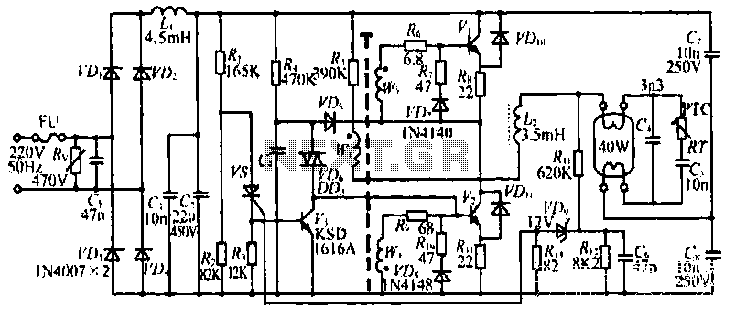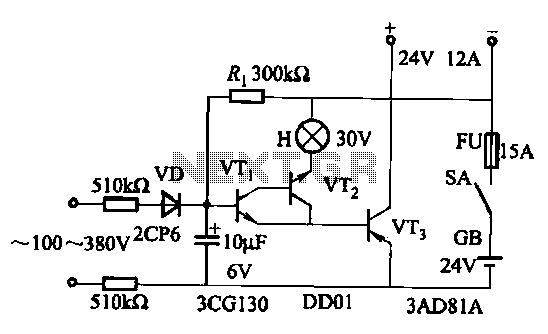
Schmitt Trigger Circuit
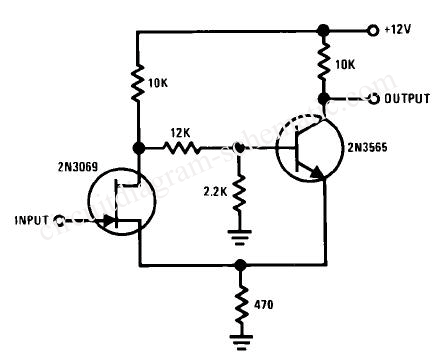
This Schmitt trigger circuit is emitter coupled and provides a simple comparator action. The 2N3069 JFET places very little loading on the measured input. Schmitt trigger, emitter coupled, simple comparator, 2N3565, distinct hysteresis loop.
The described circuit utilizes an emitter-coupled Schmitt trigger configuration, which is characterized by its ability to provide a stable output with distinct thresholds for switching, thanks to the inherent hysteresis. The circuit employs a 2N3069 Junction Field Effect Transistor (JFET) as a key component, which is known for its high input impedance and minimal loading effect on the input signal. This feature is particularly beneficial when interfacing with high-impedance sources, ensuring that the signal integrity is maintained.
In this configuration, the emitter-coupled arrangement enhances the performance of the Schmitt trigger by allowing for faster switching times and improved noise immunity. The use of the 2N3565 transistor in conjunction with the 2N3069 helps establish a distinct hysteresis loop, which defines the upper and lower threshold voltages. This hysteresis is crucial for preventing false triggering due to noise or small variations in the input signal.
The circuit's design typically includes feedback from the output to the input, which reinforces the hysteresis effect. As the input voltage rises and crosses the upper threshold, the output state switches, and as it falls below the lower threshold, the output state reverts. This behavior is essential in applications where clean transitions between states are required, such as in digital signal processing or waveform shaping.
Overall, the emitter-coupled Schmitt trigger circuit offers a reliable solution for applications needing precise voltage level detection and conversion, while the choice of JFETs minimizes interference with the input signal, making it suitable for sensitive electronic environments.This Schmitt trigger circuit is ``emitter coupled`` and provides a simple comparator action. The 2N3069 JFET places very little loading on the measured input. Schmitt Trigger, emitter coupled, simple comparator, 2N3565, distinct hysteresis loop,. 🔗 External reference
The described circuit utilizes an emitter-coupled Schmitt trigger configuration, which is characterized by its ability to provide a stable output with distinct thresholds for switching, thanks to the inherent hysteresis. The circuit employs a 2N3069 Junction Field Effect Transistor (JFET) as a key component, which is known for its high input impedance and minimal loading effect on the input signal. This feature is particularly beneficial when interfacing with high-impedance sources, ensuring that the signal integrity is maintained.
In this configuration, the emitter-coupled arrangement enhances the performance of the Schmitt trigger by allowing for faster switching times and improved noise immunity. The use of the 2N3565 transistor in conjunction with the 2N3069 helps establish a distinct hysteresis loop, which defines the upper and lower threshold voltages. This hysteresis is crucial for preventing false triggering due to noise or small variations in the input signal.
The circuit's design typically includes feedback from the output to the input, which reinforces the hysteresis effect. As the input voltage rises and crosses the upper threshold, the output state switches, and as it falls below the lower threshold, the output state reverts. This behavior is essential in applications where clean transitions between states are required, such as in digital signal processing or waveform shaping.
Overall, the emitter-coupled Schmitt trigger circuit offers a reliable solution for applications needing precise voltage level detection and conversion, while the choice of JFETs minimizes interference with the input signal, making it suitable for sensitive electronic environments.This Schmitt trigger circuit is ``emitter coupled`` and provides a simple comparator action. The 2N3069 JFET places very little loading on the measured input. Schmitt Trigger, emitter coupled, simple comparator, 2N3565, distinct hysteresis loop,. 🔗 External reference
Warning: include(partials/cookie-banner.php): Failed to open stream: Permission denied in /var/www/html/nextgr/view-circuit.php on line 713
Warning: include(): Failed opening 'partials/cookie-banner.php' for inclusion (include_path='.:/usr/share/php') in /var/www/html/nextgr/view-circuit.php on line 713
